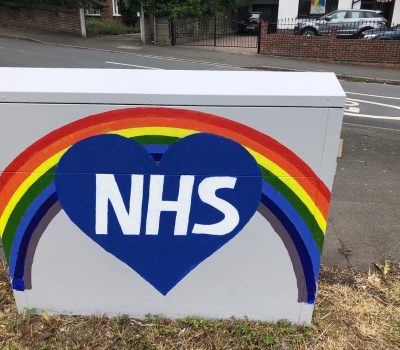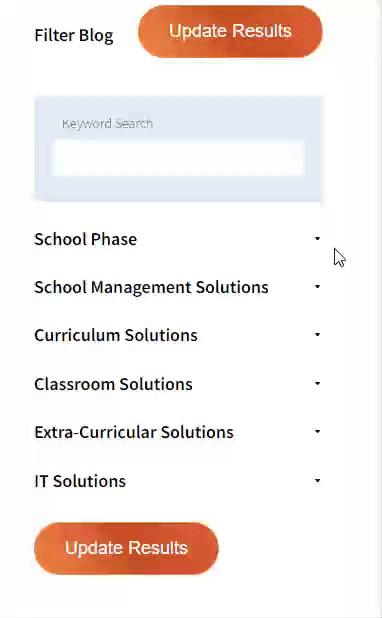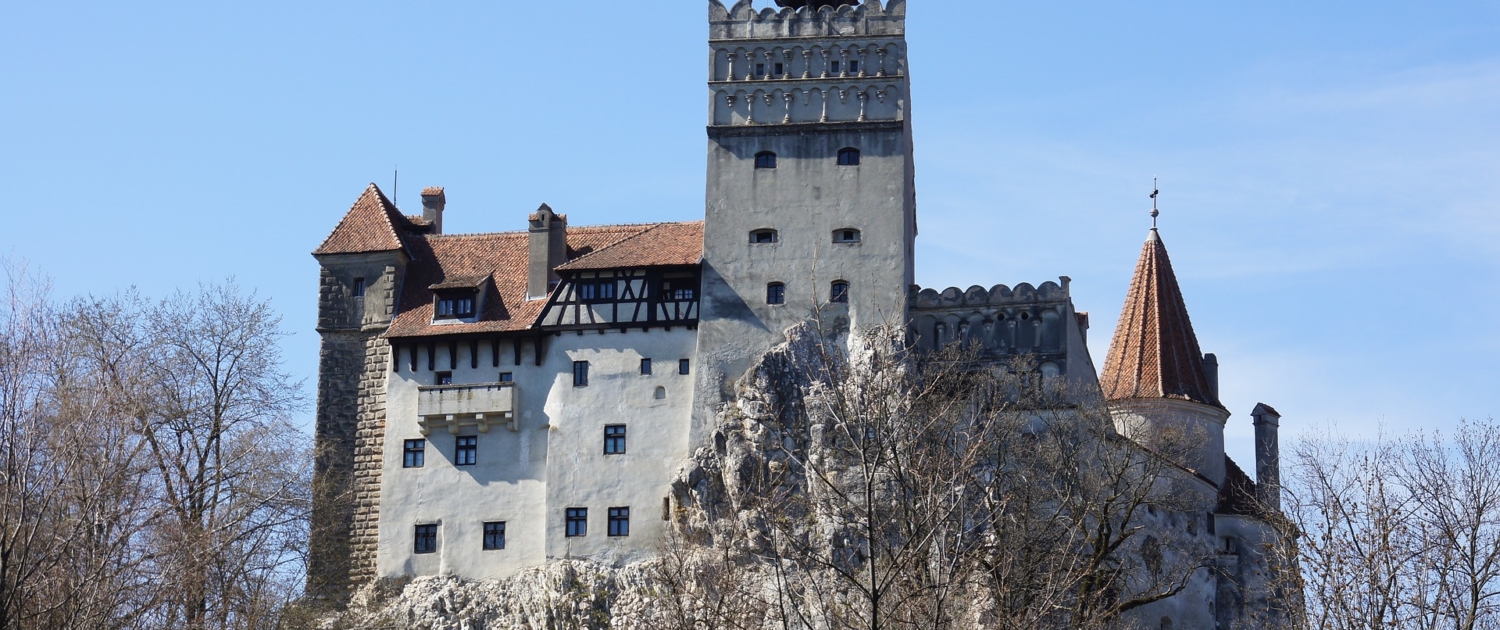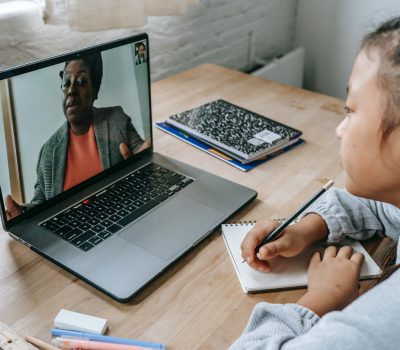


Our team sorts through all blog submissions to place them in the categories they fit the most - meaning it's never been simpler to gain advice and new knowledge for topics most important for you. This is why we have created this straight-forward guide to help you navigate our system.


And there you have it! Now your collection of blogs are catered to your chosen topics and are ready for you to explore. Plus, if you frequently return to the same categories you can bookmark your current URL and we will save your choices on return. Happy Reading!
Our trip to Dracula’s home. In her first NexEdBlog, Orla Carlin writes how she is getting to grips with remote learning and engaging her students virtually.

“Buna, buna, buna” I said to my class during the next live session. They responded back in confusion. I asked them to guess which language this was and asked the students to guess what it meant. After a round of guessing I explained it means hello. I asked them to find out which country it was from and after fifteen guesses they got the country right. The said Buna back and they asked why I was speaking Romanian. I told them we are going on a school trip today to Draculas home.
New to the whole online teaching scene, I debated how I could make the online lessons more engaging. From school to school the style of online teaching changes and some require the delivery of live sessions. The whole nature of online teaching is transient and open to change as teachers and managers get to grips with something they have never quite dealt with before. Because I have been overwhelmed with four live sessions daily- I really was feeling the pressure of making them more interesting, entertaining and fun while at the same time making sure they were extremely educational.
One thing I did was look up virtual tours. Dracula is a known horror icon and now Google are offering virtual tours of his home (Bran Castle, Romania). We needed to improve our creative and descriptive skills so we went off to Romania from the comfort of our own homes. You must all have heard of the Vampire King, Vlad Dracula and how he would float away to his castle? The writer Bram Stoker (writer of the famous novel Dracula) got the idea for the castle from Bran Castle. He was inspired by it. And thanks to Google, people across the world can virtually roam the corridors of this terrifying place from their couch.
The first task of the lesson entailed me explaining how “The castle in Stoker’s ‘Dracula’ is described as “a castle located high above a valley perched on a rock with a flowing river below in the Principality of Transylvania.”” I asked the students to close their eyes and visualise what they think this looked like. I then set an online timer asking them to sketch it and of course myself as a teacher, I joined in too. As the Guardian (2014) reiterates “drawing has creative, expressive and educational value; it remains fundamental to translating and analysing the world.” It is essential for any curriculum. What better way to add cross curricular incentives than add some quick and fun sketching to English during quarantine. We flashed our drawings one by one and then merged them together. This led to a discussion about how our minds work differently and how everything is open to interpretation. Most importantly it got them excited to see the real castle and how close their drawings were to the real thing. It was a light hearted way to start the day after shouting Buna.
The next step of the session was the actual tour provided by Google. The students were instructed to take the virtual tour individually. Cambridge (2018) stated in their online teaching blog how it is useful to develop language skills by asking students “What their favourite room was and where it was located? Students will need to write down locations in English, and express personal preferences and reasons for that choice.” Students had to write down the description of the room or session, working on colours, shapes and verbs and students were asked to write down any other information they consider relevant. After this task the students were asked to pick a room then the others had to guess were they were. This was extremely fun and made them so excited to read their descriptions.
For the final activity the students were split into online groups and asked to take a room each to create a horror story scene for each room. They had to imagine a hero walking through the castle and they had to create an event for their particular room. At the end of this task the teacher provided feedback and we put the stories together it really was creative and fun. We finished off the lesson taking the tour again from the start of the virtual tour and each group narrated their scene while we flicked through the tour. This activity greatly appealed to auditory and visual learners.

The author
https://www.tes.com/teaching-resources/shop/Teachtastic2020/Sociology

Read more

Read more

Read more

Read more

Read more

Read more

Read more

Read more


Are you looking for solutions? Let us help fund them! Nexus Education is a community of over 11,000 schools that come together to share best practise, ideas and CPD via online channels and free to attend events. Nexus also offers funding to all school groups in the UK via nexus-education.com


Established in 2011, One Education is a company at the heart of the education world, supporting over 600 schools and academies. Our unique appeal as a provider is in the breadth and synergy of the services we offer, supporting school leaders, teachers and support staff to achieve the best possible outcomes for their pupils and staff.

School Space is a social enterprise that has empowered schools for over 12 years through their profitable and hassle-free lettings services. So far, they’ve generated over £5 million in revenue for education, helping to connect over 200 schools with their local communities.


Unify is an online sales and marketing tool that allows users to create tailored personalised documents in moments.


There’s nothing special about the energy we sell. In fact, it’s exactly the same energy as all our competitors provide. But there is something special about the way we do it. Where others complicate the process, we simplify it. Where others confuse customers with hidden terms, we’re an open book. And where others do all they can to make as much money from their customers as possible, we do all we can to make as little. Everything we do, we do it differently. Our customers are a privilege. One we’ll never take advantage of.


Securus provide market-leading monitoring solutions to safeguard students on ALL devices both online and offline. We also offer a full monitoring service, where we carry out the monitoring on behalf of the school, freeing up valuable staff resources. From the smallest school to large MAT groups, Securus offers safeguarding protection for all!


Bodet Time offers dedicated solutions to education through lockdown alerts, class change systems, PA and synchronised clock systems. Improving time efficiency of the working and school day; ensuring safety through lockdown alerts; increasing communication with customised broadcast alerts.


Robotical makes Marty the Robot - a walking, dancing coding robot that makes programming fun and engaging for learners as young as 5. Our robots come with a full Learning Platform that has complete teaching resources, to make lesson planning a breeze.